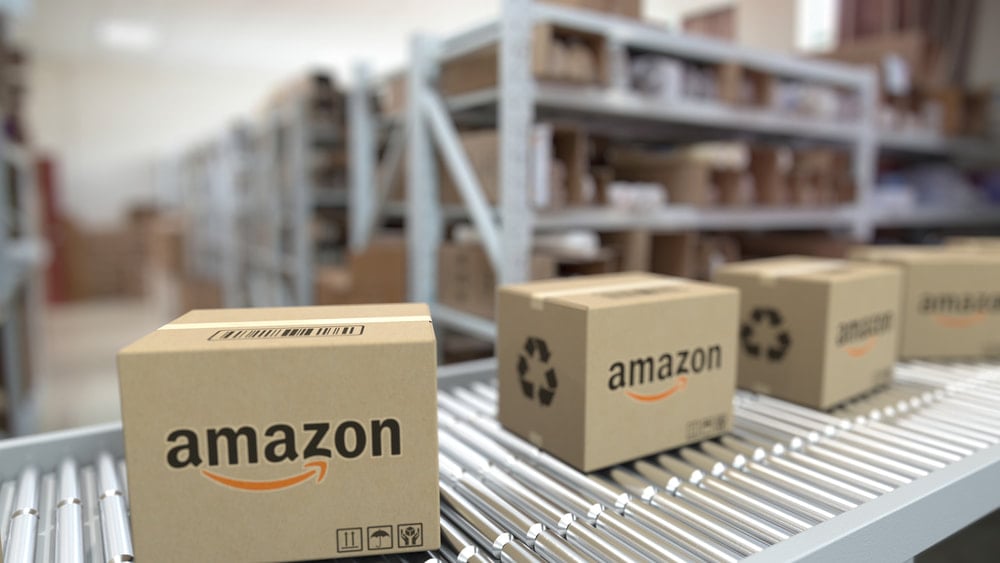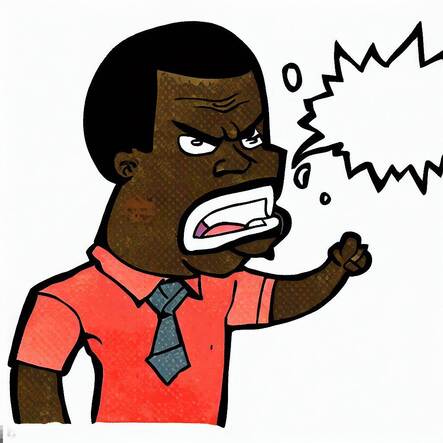IntroductionThe Federal Trade Commission (FTC) recently filed a lawsuit against Amazon, alleging that the company has engaged in unfair and deceptive practices that have harmed its third-party sellers. The lawsuit is a significant development, as it is the first time that the FTC has taken action against Amazon for its treatment of third-party sellers. The FTC's AllegationsIn its complaint, the FTC alleges that Amazon has engaged in a number of unfair and deceptive practices, including:
The Impact on Third-Party SellersThe FTC's allegations suggest that Amazon's unfair and deceptive practices have had a significant impact on its third-party sellers. Many sellers have complained that they are unable to compete fairly with Amazon and that they are forced to accept unfair terms and conditions in order to sell on the Amazon platform. How AMZ Sellers Attorney® Can Help Affected SellersAMZ Sellers Attorney® is a law firm that specializes in representing Amazon third-party sellers. The firm has a deep understanding of Amazon's business practices and is committed to helping sellers protect their rights. AMZ Sellers Attorney® can help affected sellers in a number of ways, including:
If you are an Amazon third-party seller who has been affected by the company's unfair and deceptive practices, AMZ Sellers Attorney® can help you protect your rights. ConclusionThe FTC's lawsuit against Amazon is a significant development for third-party sellers. The lawsuit suggests that Amazon's unfair and deceptive practices have had a significant impact on sellers and that Amazon may be held accountable for its conduct.
If you are an Amazon third-party seller who has been affected by the company's unfair and deceptive practices, AMZ Sellers Attorney® can help you protect your rights. Call, chat or email us or submit your case for a free consultation. As a platform that sees billions of dollars in sales every year, Amazon is a critical marketplace for many businesses. However, its stringent policies ensure that sellers meet their standards, and violations can lead to account suspensions. When facing an account suspension, Amazon expects sellers to appeal the decision by submitting a Plan of Action (POA). Writing an effective POA is crucial, but many sellers make mistakes that jeopardize their chances of reinstatement. Here, we will examine the five most common mistakes Amazon sellers make when crafting their appeals. 1. Lack of Understanding About the SuspensionBefore diving into the appeal process, sellers should first take a deep breath and deeply understand why they were suspended. Amazon usually provides reasons for the suspension, often citing specific policy violations. Mistake: Sellers often address the symptoms (like high order defect rate) but not the root cause (like sourcing quality control). Solution: Dive deep into the suspension reasons and address the core issues. Rather than just stating the problem, outline the root cause and the steps you're taking to address it. For instance, if late shipments were a concern, identify if the cause was a logistical error, a supplier issue, or an internal oversight. 2. Being Defensive or ArgumentativeWhile it's natural to feel frustrated or upset about a suspension, it's essential to approach the appeal process with professionalism. Mistake: Many sellers become defensive, placing the blame on Amazon or customers, rather than acknowledging their shortcomings. Solution: Adopt a solution-oriented mindset. Accept responsibility for any mistakes made, and instead of pointing fingers, detail how you plan to rectify the situation. Amazon wants to know you're proactive and dedicated to resolving the issues. 3. Providing a Vague or Generic Plan of ActionYour POA is a critical part of your appeal, and it should provide specific, actionable steps that address the issues at hand. Mistake: Sellers sometimes submit generic plans of action that lack detail, making it appear as though they haven’t put much thought into resolving the problem. Solution: Clearly outline the steps you have taken and the preventative measures you plan to take, by expressing the actions you have already done to implement them. For instance, if counterfeit complaints were an issue, detail how you have strengthened your supply chain vetting process, implemented stricter quality checks, or now work with brand owners directly. 4. Neglecting to Showcase Preventative MeasuresAmazon is more likely to reinstate sellers who demonstrate that the suspension issue won't arise again in the future. Mistake: Focusing solely on rectifying the current problem without addressing future prevention. Solution: Emphasize long-term solutions. For instance, if inventory management was the cause of the problem, explain how you have obtained inventory management software or hired a specialist to monitor stock levels. 5. Not Seeking Expertise When NeededThere’s no shame in admitting that you might not be best-equipped to handle an Amazon appeal on your own. ]Mistake: Trying to navigate the complex appeal process without seeking advice, leading to poorly constructed appeals. Solution: Consider seeking advice from Amazon suspension experts or consultants like AMZ Sellers Attorney®. They can provide insights based on past experiences and ensure that your appeal addresses all of Amazon’s concerns. ConclusionWhile facing an Amazon suspension can be daunting, it's crucial to approach the appeal process with care and attention to detail. By avoiding these common mistakes and focusing on a well-thought-out Plan of Action, sellers can increase their chances of reinstatement. Remember, Amazon's primary concern is ensuring a great customer experience, so ensure your appeal aligns with that core principle. AMZ Sellers Attorney® is here to help you, 24 hours a day, seven days a week. Just give us a call, chat or submit your case today for a free consulation.
What is happening?Some Chinese Amazon sellers and Chinese trademark agencies are filing US trademarks using the names of dead and fictitious U.S. attorneys. This is an attempt to circumvent the USPTO rule that requires non-US persons to use a US-based attorney when filing a trademark application. Why are they doing this?There are a few reasons why Chinese Amazon sellers may be doing this. First, it can be difficult and expensive to find a US-based attorney to file a trademark application. Second, some Chinese sellers may not be aware of the USPTO rule that requires them to use a US-based attorney, or they may be using an agency that has not revealed to them the agency is using this practice. Third, some Chinese sellers may be trying to deceive the USPTO into thinking that they are US citizens or residents. What are the consequences of filing a trademark application using the name of a dead attorney?If the USPTO discovers that a trademark application was filed using the name of a dead attorney, the USPTO will suspend the application. The USPTO will then send a notice to the applicant informing them of the suspension and giving them a deadline to cure the defect. If the applicant does not cure the defect by the deadline, the USPTO will abandon the application. In addition, Amazon will often deny a brand registry application to a seller they believe circumvented the USPTO rules. How can AMZ Sellers Attorney®'s supervising attorney Kenneth Eade substitute help on these types of cases to cure the administrative suspension?If you are a Chinese (or even U.S.) Amazon seller who has received a notice from the USPTO that your trademark application has been suspended because you filed it using the name of a dead attorney, you should contact AMZ Sellers Attorney® as soon as possible. Their attorney, Kenneth Eade, is a licensed U.S. lawyer. If he takes your case, Mr. Eade can substitute in as your attorney and file an application to cure the administrative suspension. To cure the administrative suspension, Mr. Eade will:
How to avoid having your trademark application suspendedTo avoid having your trademark application suspended, it is important to make sure that you use a US-based attorney to file your application. You should also carefully review your application before submitting it to the USPTO to make sure that all of the information is accurate and complete.
If you have any questions about how to file a US trademark application, or if you have received a notice from the USPTO that your application has been suspended, you should contact AMZ Sellers Attorney® as soon as possible. Mr. Eade can help you protect your trademark rights and avoid costly mistakes. How to Get Your FBA RefundsA proper FBA audit can determine whether Amazon owes you FBA refunds. Which is easier said than done. An FBA audit requires sifting through all your selling account records to identify any errors Amazon made handling your inventory, order fulfillment, and/or customer returns, for which you are possibly owed FBA refunds. Why doesn’t Amazon automatically issue FBA refunds when they make these kinds of mistakes? Well, the “why” isn’t as important as the fact that they don’t. And if you don’t file claims for your FBA refunds, in most cases you don’t get them. FBA refunds can amount to anywhere between 1% to 3% of your avenue revenues. That’s potentially a lot of money to leave on the table, a lot of money that could make a difference to the profitability of your FBA business. Fortunately, there is a top solution to easily perform an FBA audit and get your FBA refunds. But before we get into exactly how this solution cost-effectively relieves the pain point of FBA audit hassles, let’s look at what kind of FBA refunds an FBA audit uncovers. What Are FBA Refunds?You are owed FBA refunds whenever any of your products are lost, damaged, or improperly returned. Customer returns and refunds actually represent a large portion of FBA refunds, not surprising considering Amazon’s more than generous customer return policy. Also, should Amazon destroy or dispose of any of your inventory, which it can do without your prior permission or prior notification, again you are owed FBA refunds. Another source of FBA refunds is if you are overcharged for product weight and size dimensions. Amazon bases FBA storage and shipping fees on product dimensions; if Amazon’s dimensions for your inventory are larger than the actual manufacturer specifications, you are being overcharged and are owed FBA refunds. The only way to check is to compare and verify Amazon’s dimensions against each of your product’s manufacturer dimensions. How to Know if You Are Owed FBA RefundsThe whole FBA audit process for identifying FBA refunds requires you to continually review your Amazon Seller accounts. Moreover, once you’ve identified potential FBA refunds, you have to file a claim within a specific deadline to the appropriate Amazon department. If you fail to submit the claim correctly, the claim is automatically rejected and you have to resubmit. So if you are doing this yourself, you commit to a highly tedious, time-consuming, and labor-intensive process, and with no guarantee that all the time you spend will actually pay off in substantial FBA refunds. Don't have the time to do this yourself? Well, you could hire someone to perform your FBA audit, but that adds to your overhead, and, again, with no guarantee your FBA refunds can justify the added expense. If you have an employee, you could add FBA auditing the job description, but you are also taking time away from whatever you hired them to do in the first place. Another option is to engage with a third-party service. Some service companies only perform the FBA audit, leaving it still up to you to file claims for FBA refunds. Even those that do also file claims typically do not follow up if the claim is rejected, and still charge you for filing the rejected claim. Fees vary, with some companies charging as much as a third of all your FBA refunds. Fortunately, there is a better way to perform an FBA audit and recover your FBA refunds that is simple and inexpensive. Top FBA Audit and FBA Refunds Solution: GetidaGetida is a company founded by Amazon sellers originally to recover their own FBA refunds. The Getida solution comprises:
● A quick and easy-to-use software tool that looks at the last 18 months of your Amazon Seller Central account transactions to identify possible FBA refunds ● A specialized claims team staffed by former Amazon employees dedicated to obtaining your FBA refunds Equally unique is Getida’s award-winning dashboard which allows you to view everything in real-time. You’ll see what reimbursements are approved, what amount of money you’re getting back, and if any reimbursements need more information from Amazon. There’s no charge to use the software tool or even for Getida to file claims on your behalf. If you decide to proceed, the only fee is a relatively small commission on successful claims. Getida uses what is called a pay-per-recovery system, meaning you are only charged once the maximum reimbursement has been recovered for you. And Getida doesn’t even charge a commission on the first $400 in FBA refunds. It’s the best no-risk solution to perform an FBA audit and get your FBA refunds. Click the “Free Signup” button and provide the requested information. There’s no obligation. And the potential to collect your FBA refunds more than pays for itself. Amazon's Unsuitable Inventory Policy is a policy that allows Amazon to dispose of or withhold inventory that it suspects is counterfeit, illegal, or otherwise unsuitable for sale on its platform. The policy has been a source of frustration for many Amazon sellers. Under the policy, Amazon may request additional information from sellers if it suspects that their inventory is unsuitable. Sellers are required to provide this information within 30 days. If the seller does not provide the requested information, or if Amazon determines that the inventory is unsuitable, Amazon may dispose of it. Amazon has a broad definition of "unsuitable" inventory. This includes inventory that is counterfeit, illegal, hazardous, or that violates Amazon's policies. Amazon may also consider inventory to be unsuitable if it is damaged, defective, or expired. The Unsuitable Inventory Policy can have a significant impact on Amazon sellers. If a seller's inventory is disposed of by Amazon, they will lose the value of that inventory. Additionally, sellers may be suspended from Amazon if they repeatedly violate the Unsuitable Inventory Policy. How Amazon Sellers Attorney® Can Help Amazon Sellers Attorney® is an attorney-supervised Amazon appeal service that specializes in helping Amazon sellers with policy issues. The firm can help sellers to deal with the Unsuitable Inventory Policy in a number of ways. First, Amazon Sellers Attorney® can help sellers to understand the policy and how it applies to their specific situation. The firm can also help sellers to gather and provide the information that Amazon is requesting. Second, if Amazon has wrongfully disposed of a seller's inventory, Amazon Sellers Attorney® can help the seller to get their inventory back or to recover the value of their inventory. Finally, if a seller has been suspended from Amazon, Amazon Sellers Attorney® can help them to get their account reinstated. How to Avoid Unsuitable Inventory ViolationsThere are a number of things that Amazon sellers can do to avoid Unsuitable Inventory violations. First, sellers should make sure that they are only selling products that are authentic, safe, legal and in the condition as advertised on the detail page. Second, sellers should carefully review Amazon's policies to ensure that they are in compliance. Additionally, sellers should keep good records of their inventory. This includes keeping track of the source of their inventory, as well as any documentation that shows that the inventory is authentic and meets Amazon's standards. Finally, sellers should be responsive to Amazon's requests for information. If Amazon requests information about a seller's inventory, the seller should provide that information promptly. By following these tips, Amazon sellers can reduce their risk of having their inventory disposed of or of being suspended or banned from Amazon. ConclusionIf you are an Amazon seller facing a policy violation from Amazon for unsuitable inventory or any other reason, AMZ Sellers Attorney® is here to help. Call, chat, email or submit your case to us for a free consultaton, 24 hours a day, seven days a week.
Amazon has become a modern-day marketplace colossus, with an astounding customer base of over 300 million. While the platform offers a plethora of opportunities for sellers to reach a global audience, it is not without its complexities and challenges, particularly when it comes to account suspensions or listing removals. Sellers who find themselves in the labyrinthine appeals process often wonder why it takes so long to get issues resolved. In this article, we’ll uncover the multiple layers of this often exhausting process, and how partnering with AMZ Sellers Attorney® can make a world of difference. The Complexity of the Amazon EcosystemAmazon's marketplace is a multifaceted organism, filled with third-party sellers, Amazon's own offerings, and various other services like Amazon Prime and AWS. This makes the regulation of the platform a challenging task, resulting in a lengthy and intricate appeals process for sellers who face account issues. Automated Systems and False PositivesAutomated algorithms help Amazon flag potential policy violations, but they are not foolproof. Mistakes happen, and it takes human review to sort them out. This is where delays commonly begin. Inundation of AppealsA small percentage of flagged accounts can quickly balloon into thousands of appeals, leading to a bottleneck in Amazon’s dispute resolution system. This can add to delays because human reviewers, overloaded with work, will often just deny the appeal with a standard template asking for further details. Extensive Review ProcessWhen a human reviewer finally assesses an appeal, it usually involves multiple layers of scrutiny, sometimes requiring legal consultations, which naturally prolongs the process. Communication BarriersThe communication process is often mediated through impersonal ticket systems or automated emails, creating further delays and misunderstandings. Seller ErrorsIncomplete or incorrect information from sellers can lead to unnecessary delays, stretching the appeals process out for weeks or even months. This is another reason why sellers should never submit an appeal on their own without first consulting with a qualified appeals service. Legal and Regulatory ComplianceCompliance with various legal norms across different jurisdictions further complicates and lengthens the appeals process. This is why it is important, especially in cases dealing with intellectual property infringement, to consult with an attorney-supervised appeals service. Re-appeals and BacklogsDenied appeals often lead to re-appeals, creating a cyclical backlog that can be frustrating for sellers. This is another reason why a seller should never consider making an appeal without consulting a qualified appeals service. How AMZ Sellers Attorney® Can Make a DifferenceNavigating the intricacies of Amazon's appeals process can be overwhelming, but sellers don't have to go it alone. AMZ Sellers Attorney® specializes in helping Amazon sellers through this challenging journey.
ConclusionThe Amazon appeals process is notoriously long and convoluted, due in part to the complexities of Amazon's vast ecosystem, the automated nature of initial flaggings, and legal requirements. However, with specialized assistance from AMZ Sellers Attorney®, sellers can significantly boost their chances of a quicker and more favorable resolution. Their expertise and willingness to escalate issues to the highest levels make them an invaluable ally for any Amazon seller navigating the appeals labyrinth. Call, chat, email or submit your case today for a free consultation.
The rapid rise of eCommerce has given birth to a new ecosystem of logistics and distribution, bringing with it a plethora of options for order fulfillment. One popular choice for Amazon sellers is the Multi-Channel Fulfillment (MCF) service. MCF is a fulfillment option provided by Amazon that allows sellers to fulfill orders from various sales channels, including non-Amazon platforms. In this guide, we'll explore what Multi-Channel Fulfillment is, its eligibility criteria, cost structure, benefits, and potential issues that sellers should be aware of. What is Multi-Channel Fulfillment?Multi-Channel Fulfillment is an extension of the popular Fulfillment by Amazon (FBA) program, but instead of just fulfilling orders placed on Amazon, MCF allows sellers to store their inventory in Amazon's fulfillment centers and have Amazon fulfill orders from other sales channels as well—be it their eCommerce website, physical store, or other third-party platforms. Eligibility: Who Can Use MCF?Almost all FBA sellers can opt for Multi-Channel Fulfillment. However, there are a few prerequisites:
How Much Does MCF Cost?The cost of using MCF varies depending on a range of factors, such as:
To get a precise idea of costs, sellers should consult Amazon's Multi-Channel Fulfillment fee calculator. Benefits of Using MCF Streamlined Operations Since Amazon takes care of storage, picking, packing, and shipping, sellers can focus more on core business activities like sourcing and marketing. Quick Delivery Amazon's robust logistics network ensures quicker and more reliable deliveries, enhancing customer satisfaction. Simplified Inventory ManagementHaving a single inventory for all sales channels makes management easier and more cost-effective. Lower Shipping Costs Amazon's bulk shipping arrangements often result in lower shipping costs, which can be passed on to the customer or retained as higher margins. Potential Issues and DrawbacksBranding Limitations When you use MCF, the packaging will have Amazon branding, which may not be ideal for sellers who wish to maintain their own brand identity. Cost While MCF offers a host of advantages, it is not always the most cost-effective fulfillment solution, especially for low-margin products. Complex Fee Structure Understanding and keeping track of the various fees can be complicated, making it difficult to calculate the actual ROI. Dependence on AmazonStoring all your inventory in Amazon's fulfillment centers could be risky if there are any account-related issues, affecting all your sales channels. ConclusionMulti-Channel Fulfillment by Amazon can be a powerful tool for sellers looking to streamline operations and extend the benefits of FBA to other sales channels. However, it comes with its own set of challenges, including cost and branding limitations. It's crucial for sellers to carefully weigh the pros and cons and consider their individual needs and business models before opting for this fulfillment solution. By understanding the various aspects of Amazon's Multi-Channel Fulfillment, sellers can make an informed decision on whether or not it aligns with their business goals and requirements. Amazon Prime Big Deal Days is a major sales event that takes place in October and is exclusive to Prime members. As an Amazon seller, you can take advantage of this event to boost your sales and reach a wider audience. Here are some tips on how to prepare for Amazon Prime Big Deal Days:
Here are some additional things to keep in mind as an Amazon seller during Prime Big Deal Days:
Amazon has one of the most complex and efficient supply chains in the world. It uses a variety of technologies and techniques to ensure that products are delivered to customers quickly and accurately. This has made Amazon a leader in e-commerce, and it has also benefited third party sellers who sell their products on Amazon. What is Supply Chain by Amazon?With Supply Chain by Amazon, Amazon will pick up inventory from manufacturing facilities around the world, ship it across borders, handle customs clearance and ground transportation, store inventory in bulk, manage replenishment across Amazon and other sales channels, and deliver directly to customers—all without sellers having to worry about managing their supply chain. Supply Chain by Amazon services include:
How Supply Chain by Amazon Can Help Amazon SellersSupply Chain by Amazon can offer many benefits to third party sellers, including:
Potential Drawbacks for Amazon SellersWhile SC by Amazon can offer many benefits to third party sellers, there are also some potential drawbacks. Here are a few examples:
Parting ThoughtsOverall, SC by Amazon can be a valuable tool for third party sellers. However, it is important to be aware of the potential drawbacks before using these services. Sellers should carefully weigh the benefits and drawbacks before deciding whether or not to use SC by Amazon.
In addition to the potential drawbacks mentioned above, there are a few other things that third party sellers should keep in mind when using SC by Amazon:
Amazon has announced that it will be retiring FBA storage limits on September 30, 2023. This means that sellers will be able to store unlimited inventory in Amazon FBA warehouses. However, sellers will still be charged storage fees for inventory that is not selling. This is a major change for Amazon sellers, and it is important to understand what it means for your business. Here are some of the key things to know:
The retirement of FBA storage limits is a significant change for Amazon sellers. However, by understanding the key implications of this change, you can ensure that it does not have a negative impact on your business. Tips for Sellers to Manage Inventory Under the New Storage RulesHere are some additional tips for Amazon sellers to manage their inventory under the new FBA storage limits:
By following these tips, you can ensure that you are prepared for the retirement of FBA storage limits and that you can continue to grow your Amazon business. In a recent post to the KDP Community Forum, Amazon announced new guidelines for the use of artificial intelligence (AI) on its Kindle Direct Publishing (KDP) platform. The most significant change is that Amazon will now require users to disclose whether their book contains AI-generated content. This disclosure is crucial for maintaining transparency with readers and Amazon. What is AI Generated Content?AI-generated content is text, images, or translations that are created by an AI-based tool. This can include content that is created from scratch, as well as content that is edited or translated using AI. What is the Difference Between AI Generated Content and AI Assisted Content?AI-assisted content is content that is created by a human author, but that uses AI to improve the content in some way. This could include using AI to proofread the content, to find and fix errors, or to improve the overall style or flow of the content. What are the new AI guidelines for KDP?Under the new guidelines, users will be required to disclose whether their book contains AI-generated content. This disclosure must be made when the book is first published, and it can be made in the book's description or in the author's notes. The guidelines also state that users are responsible for verifying that all AI-generated and/or AI-assisted content adheres to all KDP content guidelines. This includes ensuring that the content is not plagiarized, that it does not violate copyright laws, and that it is not otherwise offensive or harmful. Why did Amazon issue new AI guidelines?Amazon has issued new AI guidelines in response to concerns about the quality and accuracy of AI-generated content. In recent years, there have been a number of high-profile cases of AI-generated content that has been plagiarized, offensive, or simply nonsensical. The new guidelines are designed to help ensure that AI-generated content on KDP is of high quality and meets Amazon's standards. By requiring users to disclose AI-generated content and to verify its accuracy, Amazon is hoping to prevent the spread of misleading or harmful content. What does this mean for authors?The new AI guidelines will have a significant impact on authors who use AI to create or improve their content. Authors will now need to be more careful about the use of AI, and they will need to make sure that they disclose any AI-generated content in their books. However, the new guidelines also provide authors with some flexibility. Authors can still use AI to improve their content, as long as they make sure that the content is accurate and meets Amazon's standards. Overall, the new AI guidelines are a positive step for Amazon and for authors. The guidelines help to ensure that AI-generated content on KDP is of high quality and meets Amazon's standards. This will help to protect readers from misleading or harmful content, and it will also help to ensure that authors are not penalized for using AI to improve their content. We are Here for YouAt AMZ Sellers Attorney® we are KDP appeal experts. If you ever have a problem with your KDP account, don't worry. Just call or chat with us or submit your case for a free consultation, 24 hours a day, seven days a week.
Amazon is expanding its sponsored product ads program to include off-Amazon placements. This means that brands will now be able to show their ads on other websites and apps, as well as in search results. The expansion is part of Amazon's efforts to reach more customers and grow its advertising business. The company believes that off-Amazon placements will help brands reach customers who are already interested in their products, but may not be aware that they are available on Amazon. The new program will be available to all Amazon sellers who have a Professional Selling Plan. To get started, brands will need to create a campaign and select the off-Amazon placements that they want to target. They can then set a budget and choose how their ads will be displayed. Amazon says that the off-Amazon placements will be powered by its machine learning technology, which will help to ensure that the ads are relevant to the users who see them. The company also says that it will be transparent about how the ads are being targeted and measured. The expansion of sponsored product ads is a significant move by Amazon. It is a sign that the company is increasingly looking to compete with other online advertising platforms, such as Google and Facebook. It is also a way for Amazon to reach more customers and grow its advertising business. Benefits of New Sponsored Ads ProgramHere are some of the benefits of Amazon's expanded sponsored product ads program:
If you have a brand that sells on Amazon, you should consider using the expanded sponsored product ads program. It is a great way to reach more customers, increase brand awareness, and drive traffic to Amazon. Tips for Creating Successful Amazon Sponsored Product Ads
As an Amazon seller, it is inevitable that you will receive customer complaints from time to time. How you handle these complaints can have a big impact on your business. If you handle them poorly, you could lose customers, damage your reputation, and even get your account suspended. Tips on How to Handle Customer Complaints Effectively
By following these tips, you can effectively deal with Amazon customer complaints and maintain a positive customer experience. Additional TipsHere are some additional tips that you can follow:
Parting ThoughtsBy following these tips, you can show the customer that you are taking their complaint seriously and that you are committed to resolving it to their satisfaction. This will help to build trust and loyalty with your customers, which is essential for a successful Amazon business.
Amazon has announced that it is changing the order cancellation request process for sellers. Under the new process, sellers will now have to provide a reason for the cancellation. This change is being made to prevent sellers from abusing the cancellation process. Impact on Sellers and BuyersThe new process will have a significant impact on both sellers and buyers. For sellers, it will mean that they will have to be more careful about when and why they cancel orders. They will also need to provide a clear and concise reason for the cancellation, which could take time and effort. For buyers, the new process will mean that they are less likely to have their orders cancelled without a reason. This will give them more peace of mind and ensure that they receive the items they have ordered. Why Amazon is Making This ChangeAmazon is making this change because it has been abused by some sellers. Previously, sellers could cancel orders without providing a reason. This led to some sellers cancelling orders that they had already shipped or that were in the process of being shipped. This could cause problems for buyers, such as late deliveries or out-of-stock items. The new process is designed to make it more difficult for sellers to abuse the cancellation system. By requiring sellers to provide a reason for the cancellation, Amazon can better understand why the order is being cancelled and take appropriate action. For example, if a seller is cancelling an order because the item is out of stock, Amazon may be able to offer the buyer a replacement item or a refund. Tips for SellersHere are some tips for sellers to avoid abusing the cancellation process:
Implementation TimelineThe new process is expected to go into effect in early 2023. Sellers who violate the new policy may be subject to penalties, such as account suspension or termination. ConclusionThe changes to Amazon's order cancellation request process are a significant step towards preventing abuse of the system. By requiring sellers to provide a reason for the cancellation, Amazon can better understand why the order is being cancelled and take appropriate action. This will help to ensure that buyers have a positive experience when shopping on Amazon.
Amazon and Shopify, two of the biggest players in the e-commerce industry, have struck a deal that will allow Shopify merchants to use Amazon's logistics network. The deal, which was announced on August 30, 2023, is a major coup for Shopify, as it gives its merchants access to Amazon's vast network of warehouses and delivery drivers. Under the terms of the deal, Shopify merchants will be able to use Amazon's Buy with Prime badge on their websites. This will allow shoppers to know that their orders will be shipped quickly and reliably, as Amazon Prime members receive free two-day shipping on eligible items. Shopify merchants will also be able to use Amazon's fulfillment services. This means that Amazon will store, pick, pack, and ship their orders. This can be a major time and cost savings for merchants, as they will no longer need to invest in their own warehouses or delivery network. The deal is a win-win for both Amazon and Shopify. Amazon gains access to a new pool of customers, while Shopify merchants gain access to Amazon's superior logistics network. The deal is also likely to benefit shoppers, as they will have more choice and convenience when it comes to where they buy their products. What Does This Mean for Sellers Who Have Both Amazon and Shopify Stores?For sellers who have both an Amazon and a Shopify store, the deal means that they can now offer their products on both platforms and use Amazon's logistics network to ship their orders. This can be a major advantage, as it can help sellers to improve their shipping times and reduce their shipping costs. In addition, the deal means that sellers can now use Amazon's Buy with Prime badge on their Shopify stores. This can help to boost sales, as shoppers are more likely to buy from merchants who offer free two-day shipping. Overall, the deal between Amazon and Shopify is a major development in the e-commerce industry. It is likely to benefit both sellers and shoppers, and it could make it even more difficult for smaller e-commerce businesses to compete. Here are Some Specific Benefits Sellers on Both Platforms Can Expect
How to Connect Your Shopify and Amazon Stores to BenefitTo connect their Shopify store with Amazon pursuant to this deal, sellers will need to:
Once the Shopify store is connected to Amazon MCF, sellers can start shipping their orders through Amazon's logistics network. Here are some additional details that sellers should keep in mind:
Parting ThoughtsOverall, the deal between Amazon and Shopify is a major win for sellers who have both an Amazon and a Shopify store. It can help them to improve their shipping times, reduce their shipping costs, and increase their sales. If you have any questions about the deal, or Amazon policies in general, feel free to call, chat, email us or submit your question here.
|
|
- Reviews
- Amazon News
-
Our Services
-
Amazon Appeals| Reinstate Account
>
- Amazon Appeal Inauthentic Item Suspension
- Amazon Appeal ODR Suspensions
- Amazon Related Account Appeals
- Appeal Amazon Verification Suspension
- Amazon Restricted Product Appeals
- KDP and ACX Termination Appeals
- Merch by Amazon Termination Appeals
- Amazon Drop Shipping Policy Appeals
- FBA Reimbursement Abuse Suspensions| Appeals
- Amazon Relay Suspension Appeals
- Amazon Safety Complaint Appeals
- Sales Velocity Suspension Appeals
- Amazon Sales Rank Manipulation Appeals
- Amazon Price Gouging/Fair Pricing Suspensions Appeals
- Amazon Review Manipulation Suspension Appeals
- Amazon Variation Abuse Appeals
- Amazon Forged or Manipulated Documentation Appeals
- Amazon Listing (ASIN) Removal? Reinstate Listing
- Amazon Seller Fraud or Illegal Activity Deactivation Appeals
- Amazon Account Hacked Suspension Appeal
- Amazon Funds Appeal
- How to Open Multiple Amazon Seller Accounts
- How to Settle Amazon TRO and Release Funds
- How to Settle Proposition 65 Cases and Release Funds
- Amazon Arbitration Lawyers Sue Amazon and Win
- Amazon Brand Registry Support
- Amazon Intellectual Property Lawyers >
- LLC Formation for Amazon Sellers
- Ebay Suspension Appeals
- Walmart Suspension Appeal
- Appeal Closed or Limited PayPal Account
- Etsy Suspension Appeal
- Amazon Hijacker Removal Service
- Twitter Account Suspension Appeals
- Temu Seller Suspension Appeal
- TikTok Seller Suspension Appeal
-
Amazon Appeals| Reinstate Account
>
- Free Consultation
- About Amazon Sellers Attorney
- Amazon Suspension Prevention with Free Appeals
- Top Rated Patent Attorney | Free Consultation
- Terms and Conditions
CONTACT DETAILS:AMZ Sellers Attorney®
9350 Wilshire Blvd. suite 203 Beverly Hills, CA 90212 (Mailing Address) نتحدث العربية
Türkçe konuşuyoruz Nous parlons français 🇫🇷 Мы говорим по русски 🇷🇺 Se habla español 🇪🇸 我們說中文 🇨🇳 |
SERVICES:Amazon Appeals
Inauthentic Item Suspensions Multiple/ Related Account Suspensions Amazon Verification Suspensions Forged or Manipulated Documentation Defending Buyer Complaints Plan to Prevent Suspension Intellectual Property (IP) Law Reinstating ASIN Fraud or Illegal Activity Hacked Account Listing Hijackers DMCA Lawyers Amazon Arbitration |
PAYMENTS:We accept payments from all major credit cards and also by ACH transfer through BlueSnap. Our purchase currency is US Dollar (USD). Payments made through our site are secure.

|
AS REPORTED IN:
|
|
|
|
|
|
Copyright © 2024 AMZ Sellers Attorney ® All Rights Reserved. Privacy Policy
















 RSS Feed
RSS Feed